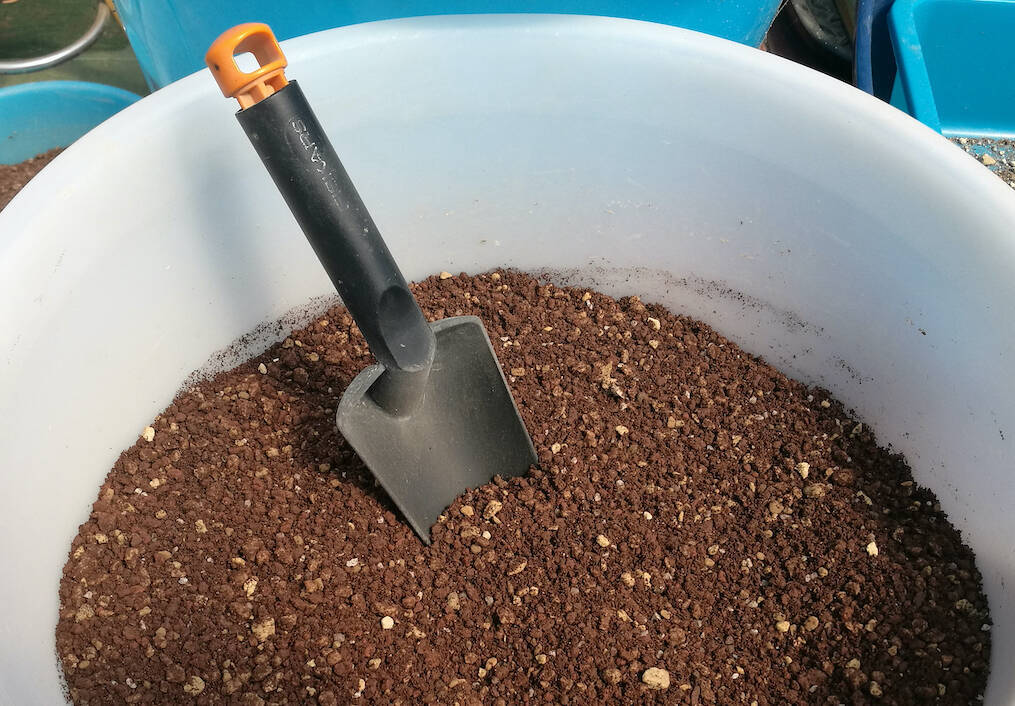Surfing the Internet shows how easy it is now to find retailers of plant-growing materials. It is also true specifically for cacti and succulent plants: online, from skilled nurserymen to businesses that deal only in materials such as potting soil, pots, labels, etc., it is easy to get everything you need to grow. But what to do if we don’t want to buy online? If we need large quantities of materials, and shipping can only go up to a certain weight? If we prefer to provide directly by buying potting soil (everyone may have their reasons for this or that choice)? Do we rely on the ready-made potting soils usually offered by any well-stocked nursery or garden? Or is it better to do it ourselves, assembling the various materials as peat, pumice, and sand, based on our needs?
In this article we see how to make a proper substrate for use with any genre of cactus and, with appropriate adjustments, with succulents, in general. We will make it, and this is the point of this article, with materials that anyone can now easily find in any place (…).
Introduction
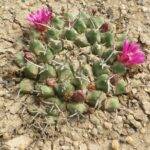
One characteristic that any substrate for cacti and succulent plants, in general, must have is the ability to drain water and dry quickly. It is the starting point, the end to which we must strive if we want to make good potting soil for succulent botanical families. The materials we can use are virtually limitless and can also vary according to the type of cultivation we want to pursue. Spartan cultivation to obtain plants similar to those in the wild, “push” cultivation to have plants that are swollen and “immaculate-looking,” “maintenance” cultivation, that is, with no particular purpose other than to grow the plant properly, etc. The combinations we can make with various materials are virtually endless and, theoretically, we could try to prepare a suitable substrate for each individual species that we intend to grow. Each plant has its own specific needs, and even among cacti, there are the species that want more organic material, others that want exclusively mineral potting soils, others that require lime substrates, and so on.
Of course, this fact opens the door to experimentation, which I recommend to anyone who has the time, desire and curiosity to test various substrates to figure out which is the best formula for this or that kind of plant (obviously in combination with the other growth factors, such as water, exposure, temperatures…).
Here you will find an article related to one of the experiments I have done over the years.
The “common” materials
After this long introduction, going back to the purpose of this article, which is nothing more than to provide basic directions for making proper soil for cacti and succulent plants using only materials readily available in any nursery and building materials retailer. Yes, because while it is true that online we can buy (up to certain quantities, of course), peat, quartzite, gravel, sand, gypsum, pumice, and lapilli of all colours and sizes, as well as potting soils specially made for cacti or succulent plants, it is equally true that good compromises can be made with “common” materials, especially if you don’t want to have too many problems.
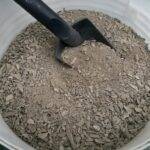
Field soil and marl deserve a separate discussion. Field soil means clay, which can be more or less calcareous, more or less sandy, and more or less rich in nutrients. In short, there are endless types, and the best way to know whether or not that field soil, mixed with aggregates such as gravel, pumice, and sand, is suitable for cacti is to experiment with it for at least a couple of years. We can say the same thing for marl, a material exceptional for growing different kinds of cacti (if you are unfamiliar with marl, find a specific article here). Marl is almost impossible to find commercially, and even when you get it, you should be careful because there are various types, and not all of them are good for cacti.
Learn more about using field soil and marl in cactus substrates in this specific article.
The classic mix
A first viable option for those who want to avoid problems, as I have written on several occasions, is the traditional mix of equal parts lapilli, pumice and peat. It is the most popular potting soil for growing cacti and succulents, especially in skilled nurseries. In principle, it gives good results with all cacti, even working very well for leafy succulents (e.g., Crassula, Echeveria, etc.) simply by adding a little peat or earthworm humus, to make the substrate a little richer organically. Pumice and lapilli usually come in sizes between 3 and 7 millimetres, and this type of substrate is easily found online or at skilled nurseries. Unfortunately, it is not yet found commercially in all nurseries or gardens that do not specialise in succulents.
This is the article’s main focus because this substrate can be made without difficulty by retrieving materials from any large nursery or garden store.
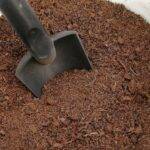
First of all, the peat. It is the organic component of the substrate that contains the nutrients needed by plants. Most cacti, in nature, live in organically poor soils, which is why in the correct substrates intended for these plants peat should never be prevalent. Again, peat retains moisture for a long time, while the basis of a valid substrate for succulents, as we have seen, is the ability to drain water and dry quickly. For these reasons potting soils intended for cacti, it’s a good idea not to use peat percentages of more than 40 per cent. With some species, particularly those with “taproots” (e.g., Ariocarpus), the amount of peat will have to be decidedly small: a maximum of 20 per cent of the total. On the contrary, in leafy succulents is correct to provide at least 50 per cent peat because these plants need more organically “rich” potting soils. At the same time require greater amounts of water than cacti (their substrate will therefore have to remain moist a little longer to allow the roots to absorb the necessary water).
Peat can be found in any nursery: in fact, it is the material that makes up all so-called ‘universal potting soils’, i.e. intended for any genre of plants. At the same time, peat is the basis of all other packaged potting soils that we find in gardens: from those for citrus trees to those for ornamental plants, turf, acidophilic plants, and aromatic plants. All these potting soils are composed mainly of peat (there can be different types, but it is always peat) and, as appropriate, small percentages of sand, perlite, or pumice. The only potting soil not to be considered with succulents is orchid-specific potting soil, which contains no peat (or very little of it) and is composed mainly of bark.
The same ready-made potting soils for cacti and succulents are nothing more than peat with a little sand, pumice or perlite. On their own, they are no good, but they can be considered on par with peat or universal potting soil, with the advantage that they will already contain some sand, perlite or pumice.
For the rest, one ready-made potting soil is as good as another: what matters is that it is of good quality and that the peat is fine and not rich in filaments, bark, timbers, and other things. If we want to be precise and have a choice, we use blond sphagnum peat, which is slightly acidic and is fine for most succulents.
As an alternative to peat, since from a sustainability point of view, its consumption on a global level has become excessive in recent years, one can use earthworm humus, which can be found in all nurseries.
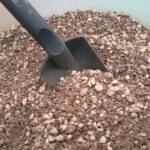
The other two elements of the traditional mix are pumice and lapilli. You can find both in well-stocked gardens, with one “flaw”: the size is almost always coarse, around 10 millimetres. There are no problems if you have to re-pot large succulents. But if you have seedlings to be placed in 5 or 7-centimetre pots, there are two alternatives and you have to be patient: you can either sift the material keeping the smaller part, or you can use the hammer (with a greater dose of patience) and break pumice and lapilli into smaller pieces. Of the two materials, in my experience, pumice is best, simply because it dries faster. With these three elements (universal potting soil, pumice, lapilli), we can already make a perfect substrate that is very popular in growing cacti and succulents. Mix well one part peat (as a unit of measurement, you can use the scoop) with one part pumice and one part lapilli, and the substrate is ready. If it is intended for leafy succulents, add a couple of scoops of peat to the final mix; if you intend to use it for “mangy,” very moisture-sensitive cacti, reduce the amount of peat by half.
The ‘simple’ mix
A valid alternative to the classic pumice/lapillus/peat mix, which can also be found for sale online or in large bags at some nurseries specialising in succulents, is the potting soil that I have prepared in the video published below. It is an even simpler but perfect substrate for almost all cacti and succulents, which I use when I finished my specific mixtures. Again, the starting point is peat. If the universal potting soil is of good quality, there will be no need to sieve it because it will not have any residual bark, coconut fibre, wood and other ‘impurities’. Good quality universal potting soil, it bears repeating, is usually peat of two or three types already sieved fine (and even this is fine because we will be adding the ‘coarse’ part to the compost), and added with a little pumice or, more often, perlite.
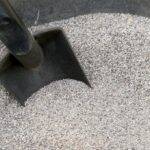
To one part peat, we add one part pumice and half a part fine sand, and the substrate is ready. As I have written before, the pumice we find in gardens is usually coarse-grained but can be sieved or crushed if necessary. Sand, on the other hand, is easily found at building material dealers. Caution: it must be river sand, preferably silica sand. Avoid sea sand. As I pointed out, in this substrate to one part peat and one part pumice I add only half a part sand because fine sand is only very useful in small quantities. If we were to make potting soil with only fine material (sand, pure peat or pumice powder, for example), we would create a potential succulent ‘killer’. In fact, after a few waterings, the substrate would compact and remain constantly moist, causing asphyxiation and root rot. Therefore, it is essential to have both a fine part (useful for rooting) and a coarse part in the substrate, which can make the soil ‘loose’ and increase its drainage capacity.
As I explain in the video, we can make small changes to this mixture if necessary so that it is also perfect in specific cases. For example, if we have to re-pot leafy succulents or hardy plants such as Echinopsis or epiphytic cacti such as Epiphyllum or Schlumbergera we can increase the amount of peat a little (add a couple of shovelfuls at the end and mix everything well). On the contrary, if we are dealing with delicate, slow-growing and particularly sensitive to stagnation plants such as Ariocarpus, Pelecyphora, Aztekium, Copiapoa and others, we can halve the amount of peat and add gravel or quartzite to the substrate.
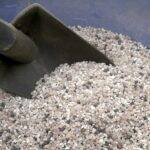
The latter are also readily available materials in any city. Gravel (with a grain size of between 3 and 5 millimetres) can be found at building material dealers, often mixed with sand. In these cases, with a bit of patience and a fine-mesh sieve, you will be able to separate the sand from the gravel and thus be able to use them in separate dosages. On the other hand, quartzite can be found in aquarium shops or pet shops. There are countless types of quartzite: it can be bought in various sizes and colours. Just be sure it is not “treated” or in any way coloured material.
SUBSCRIBE TO THE SITE – If you liked this article, subscribe to the site to have access to all the contents for one year or three months depending on the formula you choose. Here you will find terms and conditions.
SUBSCRIBE TO THE NEWSLETTER – If you want to receive the free newsletter every time new content is published (even if you have not subscribed to the site), fill in the fields at this link!
My video
Correlated articles
How much light do cactus need? A summary table
How to repot cacti and succulent plants
Substrates for cacti and succulents
The correct soil: the materials you can use
When and how fertilize cactus and succulent plants
© The texts, videos, photos and graphic elaborations of the site “Il fiore tra le spine” are original material and are covered by copyright. It’s forbidden to reproduce them in any way.


